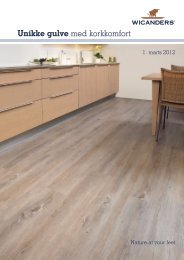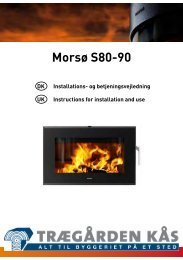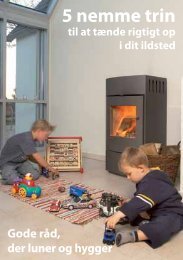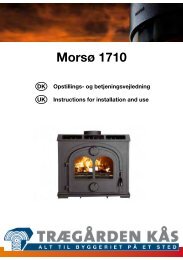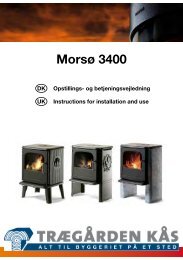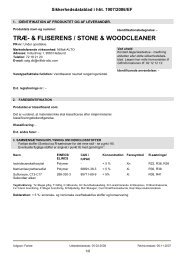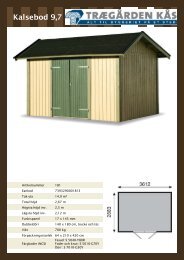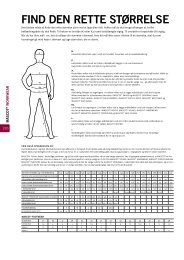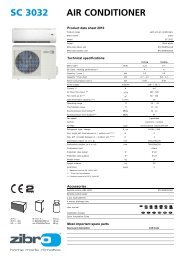Morsø S11 serien
Morsø S11 serien
Morsø S11 serien
You also want an ePaper? Increase the reach of your titles
YUMPU automatically turns print PDFs into web optimized ePapers that Google loves.
We recommend that the stove be installed at least 10-15 cm from masonry in order to allow<br />
heat to circulate and to facilitate the cleaning of the inside and outside of the stove. A layer of<br />
wallpaper on a brick wall is normally regarded as non-flammable material.<br />
D<br />
The floor<br />
If the stove is installed on a flammable floor, national and local regulations must be observed<br />
with regard to the size of the non-flammable underlying surface that must cover the floor<br />
beneath the stove.<br />
The underlying surface must naturally be able to bear the weight of the stove and, if applicable,<br />
the steel chimney.<br />
Distance to furniture<br />
We recommend that the stove be installed 700 mm from furniture, but consideration should<br />
also be given to whether furniture, etc., will dry out as a result of its proximity to the stove.<br />
The distance to flammable material in front of the stove is 700 mm.<br />
A wood-burning stove gets hot when it is fired. Caution must therefore be observed, particularly<br />
with regard to children touching the stove.<br />
1.5 The chimney<br />
If local regulations permit, the stove may be connected to a chimney already serving another<br />
fireplace (such as an oil-burning stove or another wood-burning stove). Attention should be<br />
paid to any requirements concerning the location of flue pipes if two or more fireplaces are<br />
connected to the same chimney.<br />
The wood-burning stove must never be connected to a chimney to which a gas-burning stove is<br />
already connected. An efficient, modern stove places great demands on the chimney, so have a<br />
chimney sweep check the condition of your chimney.<br />
The aperture of the chimney must comply with national and local regulations. In general, the<br />
aperture area should measure at least 175 cm 2 for wood-burning stoves.<br />
An overly large chimney aperture will mean that too much energy will be required to heat the<br />
chimney sufficiently to achieve an acceptable draught. If you have a brick chimney with a large<br />
aperture, we recommend that you install an insulating chimney liner of the proper diameter.<br />
This will increase the draught, and improve the fuel economy.<br />
There are no requirements with respect to specific chimney heights, but a chimney must be tall<br />
enough to provide a good draught, and to ensure that the smoke does not cause any problems.<br />
As a general rule, there will be a satisfactory draught if the chimney extends 4 metres above<br />
the stove and at least 80 cm above the spine of the roof. If the chimney is located along the side<br />
of the house, the top of the chimney should never be lower than the spine of the roof or the<br />
highest point on the roof. Please note that there are often national and local regulations regulating<br />
the location of chimneys in houses with thatched roofs. Please see section 1.9 Draught.<br />
The chimney and the flue pipe must be fitted with cleaning doors, which must be at least the<br />
same size as the chimney’s aperture area.<br />
The chimney must be accessible for external inspection, and it must be possible to access the<br />
cleaning doors and the chimney if it is to be cleaned from the top (e.g. steel chimneys).<br />
21





